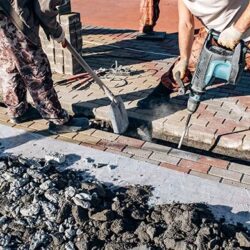A properly functioning hot water system is essential for comfort, convenience, and efficiency in every household. Whether you’re building a new home or replacing an old unit, getting the hot water system installation process right is crucial to avoid future plumbing issues, high energy bills, or lukewarm showers.
This comprehensive guide provides step-by-step expert advice to help you understand what goes into a successful hot water system installation, the options available, and what to expect during the process.
Step 1: Assessing Your Needs
Before jumping into the hot water system installation, the first step is to determine your household’s water heating requirements. Factors to consider include:
- Number of people in the house
- Number of bathrooms and hot water outlets
- Daily water usage
- Budget and energy efficiency goals
- Availability of energy sources (electricity, gas, solar)
A qualified plumber or installer will help you calculate the correct tank size and heating type based on your usage. Choosing the wrong system could mean running out of hot water or paying more than necessary in utility bills.
Step 2: Choosing the Right System
There are several types of systems available for hot water system installation, each with its own pros and cons:
- Electric Storage Systems
Ideal for small to medium households. Easy to install and relatively cheap upfront, but long-term running costs can be higher. - Gas Storage Systems
Great for homes with natural gas connections. Faster heating and more economical than electric systems in the long run. - Continuous Flow (Instantaneous) Systems
These don’t store water but heat it on demand. Perfect for households wanting endless hot water and space-saving design. - Solar Hot Water Systems
Environmentally friendly and efficient, although they come with a higher initial hot water system installation cost. Rebates may be available. - Heat Pump Systems
Energy-efficient and ideal for eco-conscious users, though best suited for warmer climates.
Choosing the right hot water system is more than just selecting a brand or model—it involves evaluating a range of factors that will directly impact installation, performance, and long-term maintenance. Your choice will influence everything from the time it takes to install the system to how often it requires servicing, as well as its overall energy efficiency, reliability, and lifespan. Making an informed decision is crucial to ensuring that your home enjoys a consistent, efficient, and trouble-free hot water supply for years to come.
One of the first considerations is the type of system that best suits your household. Options typically include electric, gas, solar, and heat pump systems, each with its own advantages and requirements. Electric systems are straightforward and relatively inexpensive to install but can have higher running costs. Gas systems offer faster heating and often lower energy bills but require a gas connection and proper ventilation. Solar systems can significantly reduce electricity costs by harnessing renewable energy, though they may require a backup system for cloudy days. Heat pump systems are highly energy-efficient and environmentally friendly but involve a higher upfront investment. Choosing the right system depends on your household’s size, daily hot water usage, energy goals, and budget.
Installation considerations are equally important. Some systems require more complex setups than others. For instance, solar and heat pump systems may need additional space, structural support, or plumbing modifications. Electric and gas systems are generally simpler to install but still need to comply with local safety regulations. The installation process can also affect how quickly your household can resume normal use, which is why professional advice is essential to plan the timing and ensure minimal disruption.
Long-term maintenance requirements vary depending on the type of system and the quality of installation. Some systems require regular flushing to remove sediment, periodic checks for leaks or corrosion, or replacement of heating elements over time. Discussing these maintenance needs with a licensed technician before installation helps you anticipate future costs and ensures your system will remain reliable and efficient for its expected lifespan.
Another important factor is energy efficiency and running costs. A well-matched system installed correctly can significantly reduce utility bills and environmental impact. Your technician can help determine the best size and model for your household, ensuring that the system doesn’t work harder than necessary, which can reduce wear and extend longevity.
Ultimately, discussing your options with a licensed professional is a crucial part of the hot water system installation process. They can assess your home, consider your household’s specific needs, and recommend the most suitable system while explaining installation requirements, maintenance expectations, and energy implications. By taking the time to make an informed choice, you ensure that your investment delivers consistent hot water, efficiency, and peace of mind for years to come.
A carefully chosen and professionally installed system is not just an appliance—it’s a long-term solution that enhances comfort, convenience, and household sustainability.
Step 3: Site Inspection and Preparation
Once a system is chosen, the next step in hot water system installation is a full site inspection. This includes:
- Checking current plumbing and drainage
- Identifying the ideal location for the unit (indoor, outdoor, roof-mounted, or garage)
- Ensuring compliance with safety regulations
- Assessing power or gas supply accessibility
- Planning for wall brackets or concrete slabs if needed
Proper preparation can save time, prevent future leaks, and ensure a seamless installation process.
Step 4: The Installation Process
The actual hot water system installation can vary depending on the type of unit and whether it’s a replacement or a new setup. Here’s a general breakdown:
- Disconnect the Old System
For replacements, your plumber will first disconnect and remove the old water heater safely, ensuring all electricity or gas lines are shut off. - Plumbing Setup
New pipes may be installed or old ones replaced, ensuring compatibility with the new system. Valves, connectors, and fittings must be secured correctly. - Electrical/Gas Work
For electric or gas systems, a licensed technician ensures correct wiring or gas connections as per safety standards. - Mounting the System
Wall-mounted systems are securely bracketed, while tanks may be placed on a stable platform. Outdoor systems may need weatherproofing. - Pressure Testing and Leak Checks
The plumber will perform pressure tests to ensure there are no leaks and the system functions efficiently. - Commissioning
Once installed, the system is filled, heated, and tested. The installer will walk you through its operation and maintenance tips.
Step 5: Compliance and Certification
After the hot water system installation is completed, the installer will provide compliance certificates, warranties, and documentation. These are essential for:
- Manufacturer warranties
- Insurance purposes
- Property resale or rentals
- Government rebates (for solar or energy-efficient systems)
Never skip this step, and make sure you retain all paperwork.
Step 6: Maintenance Tips
Proper care post-hot water system installation ensures a long-lasting and efficient system:
- Check the pressure relief valve every 6 months
- Flush the system annually (for storage tanks)
- Schedule a professional inspection every 2 years
- For solar systems, clean panels and check for shading regularly
Routine maintenance avoids breakdowns, saves energy, and keeps your system compliant.
Final Thoughts
A smooth hot water system installation isn’t just about connecting pipes—it’s about smart planning, choosing the right system, and ensuring long-term performance. By following these steps and working with a licensed professional, you can enjoy reliable hot water year-round without the stress of unexpected repairs or inefficiencies.
Whether you’re replacing an outdated unit or installing a new system in a freshly built home, a well-executed hot water system installation provides peace of mind, energy savings, and daily comfort. Always consult with qualified professionals to ensure safety, compliance, and the best system for your needs.




